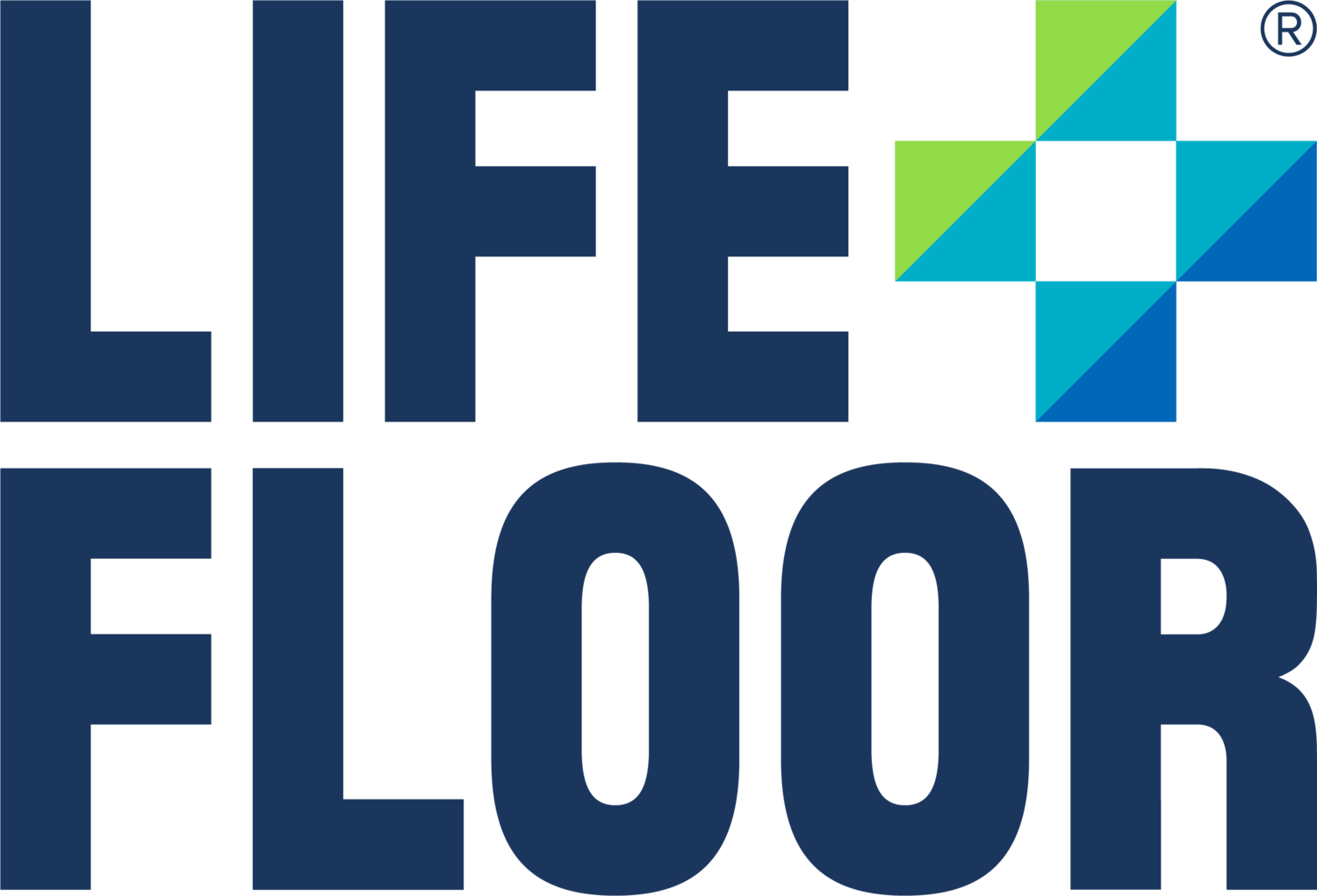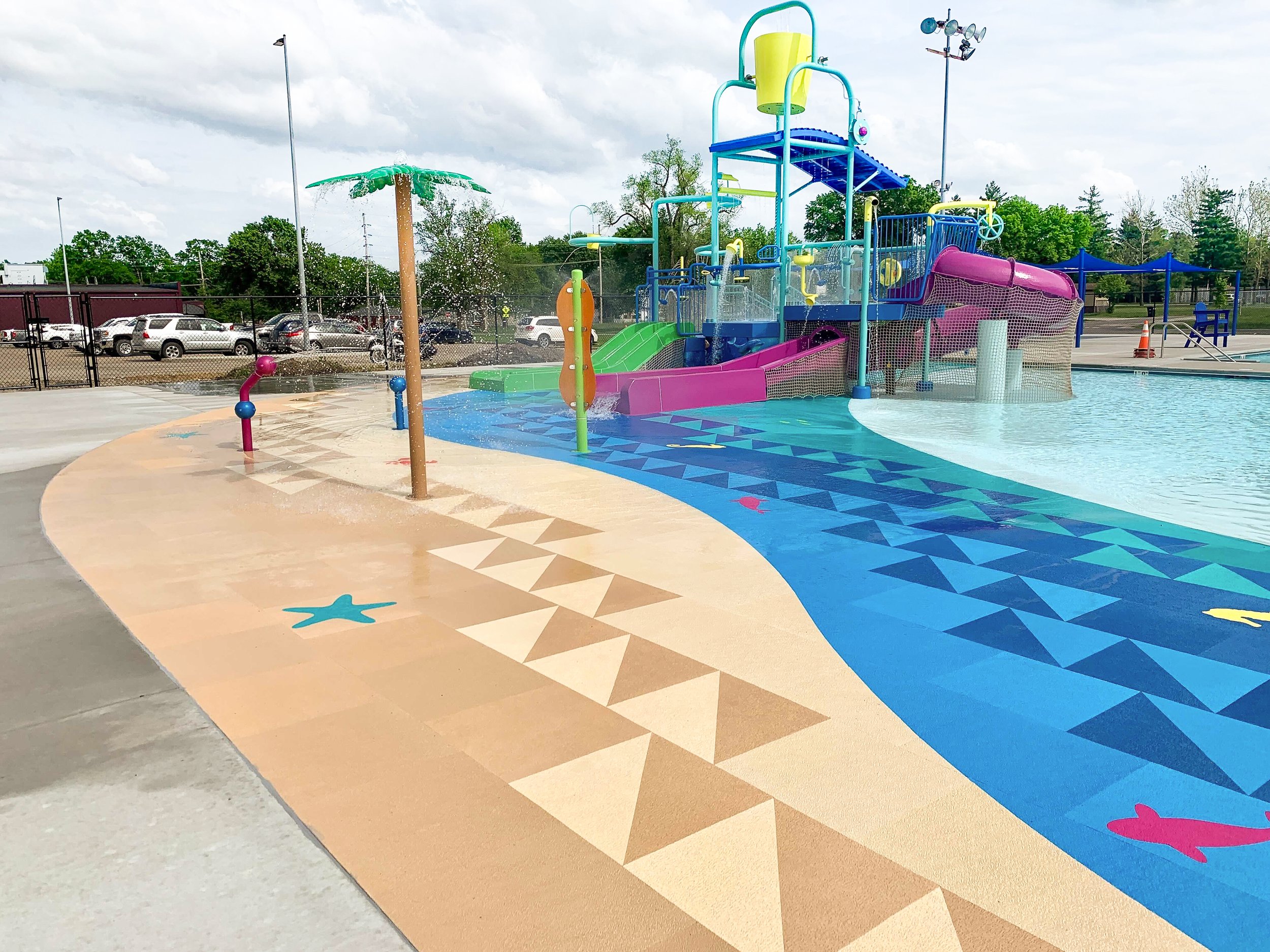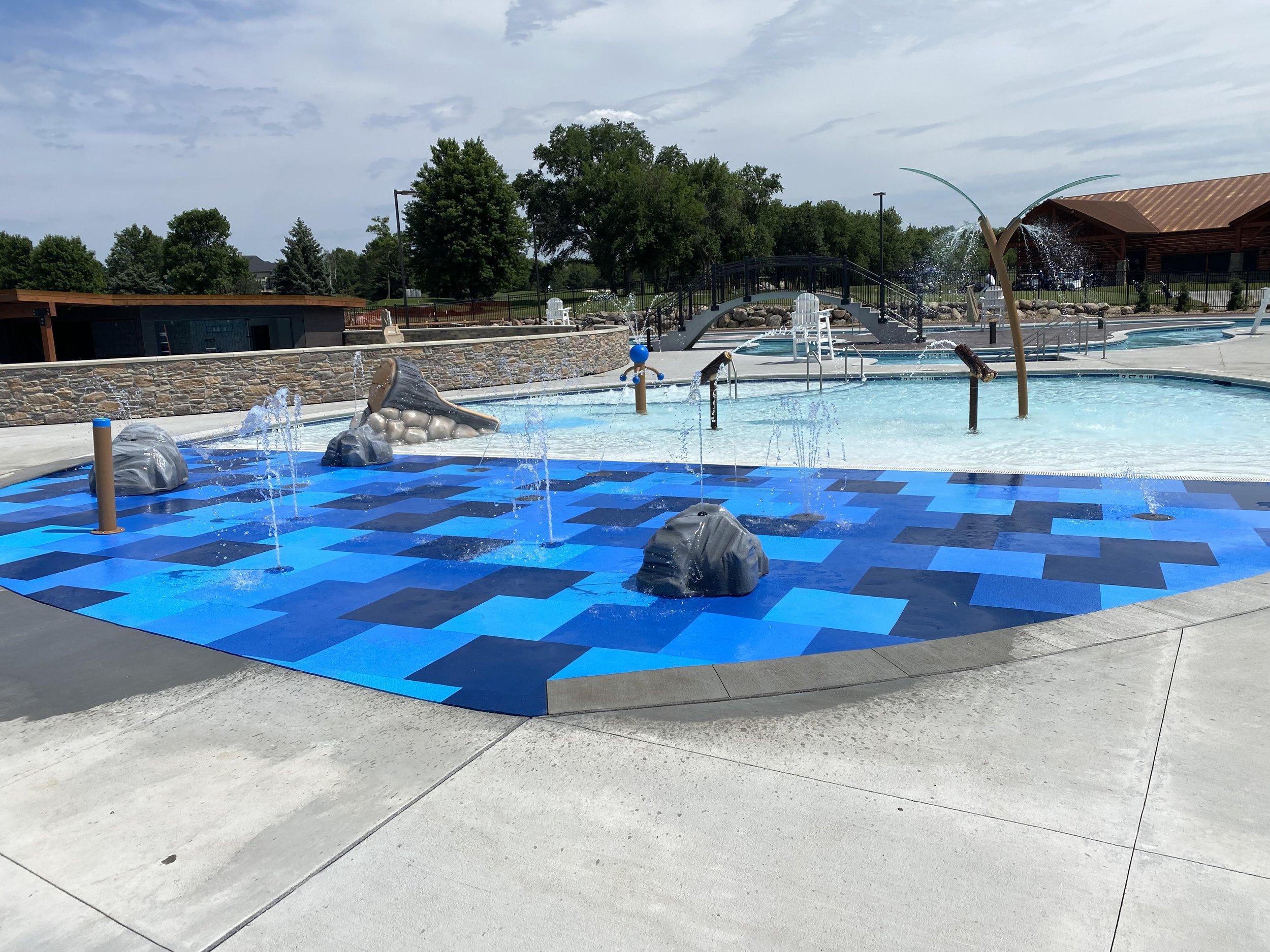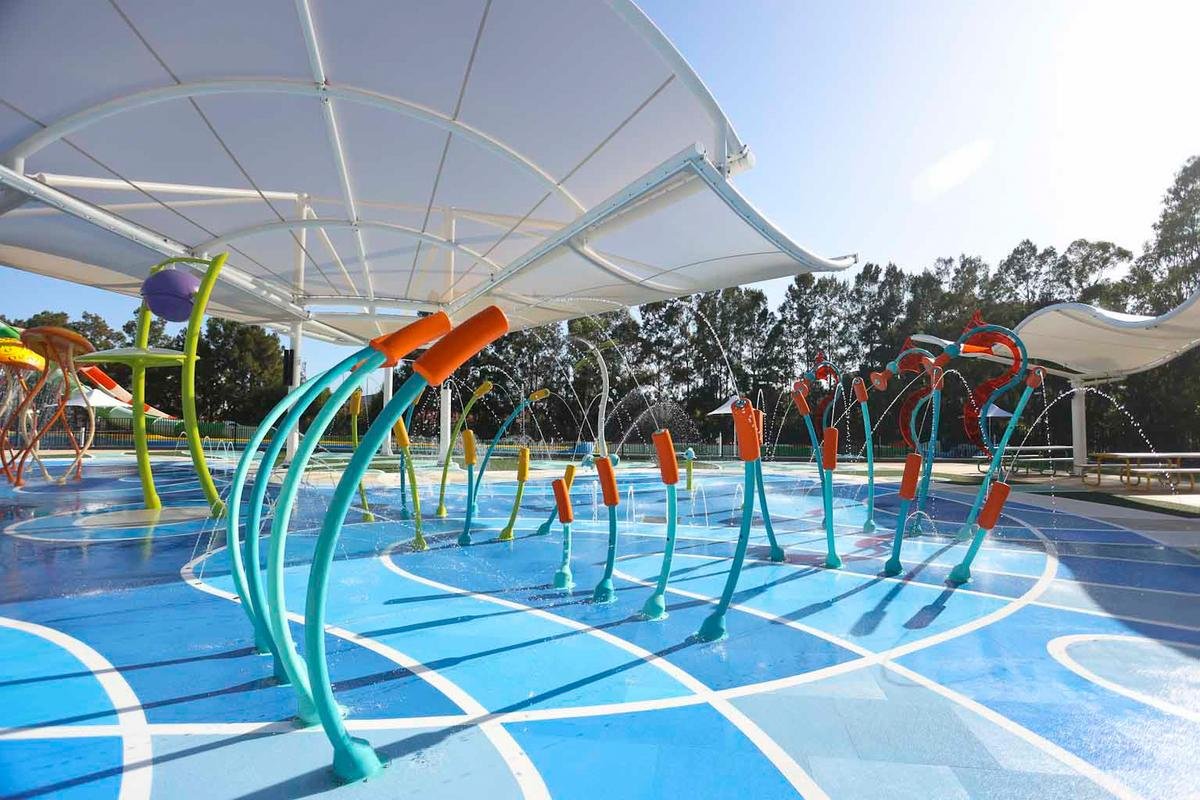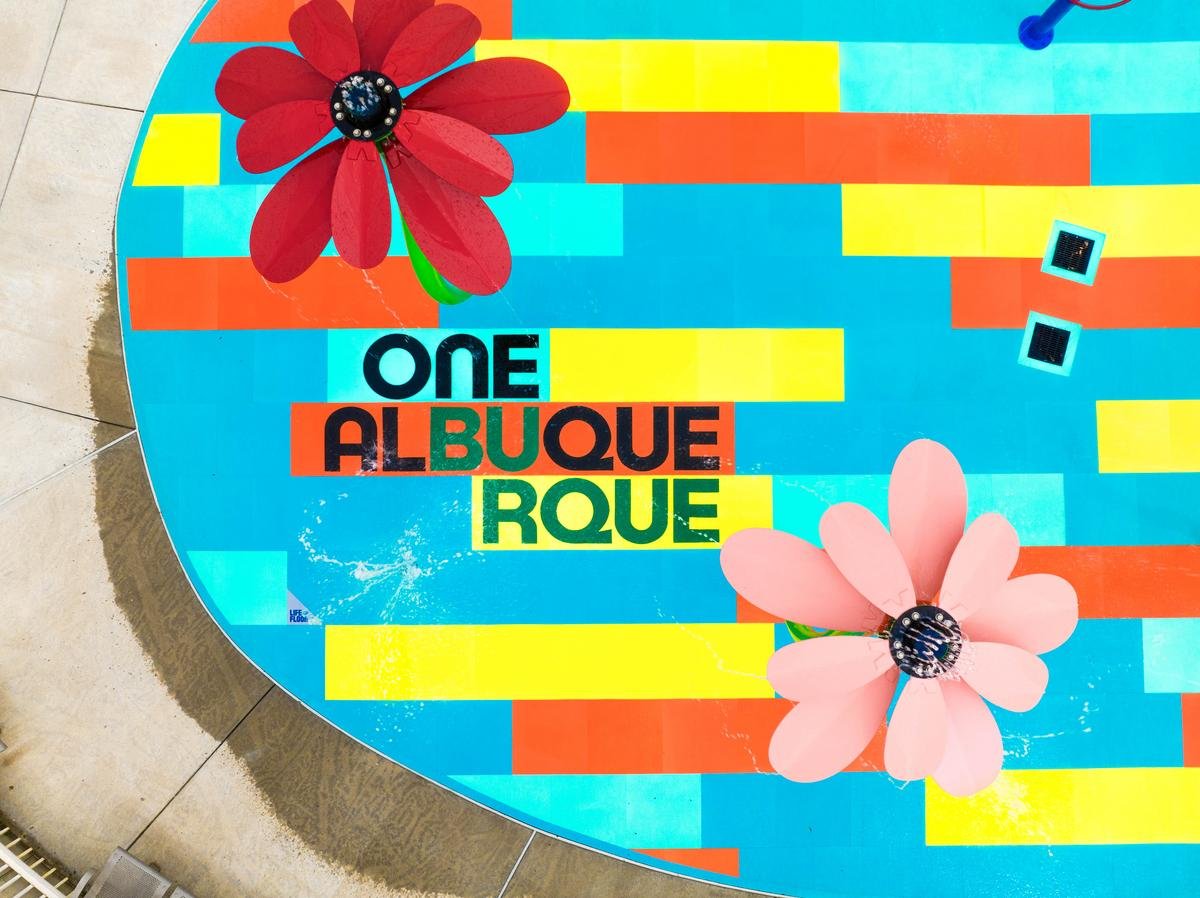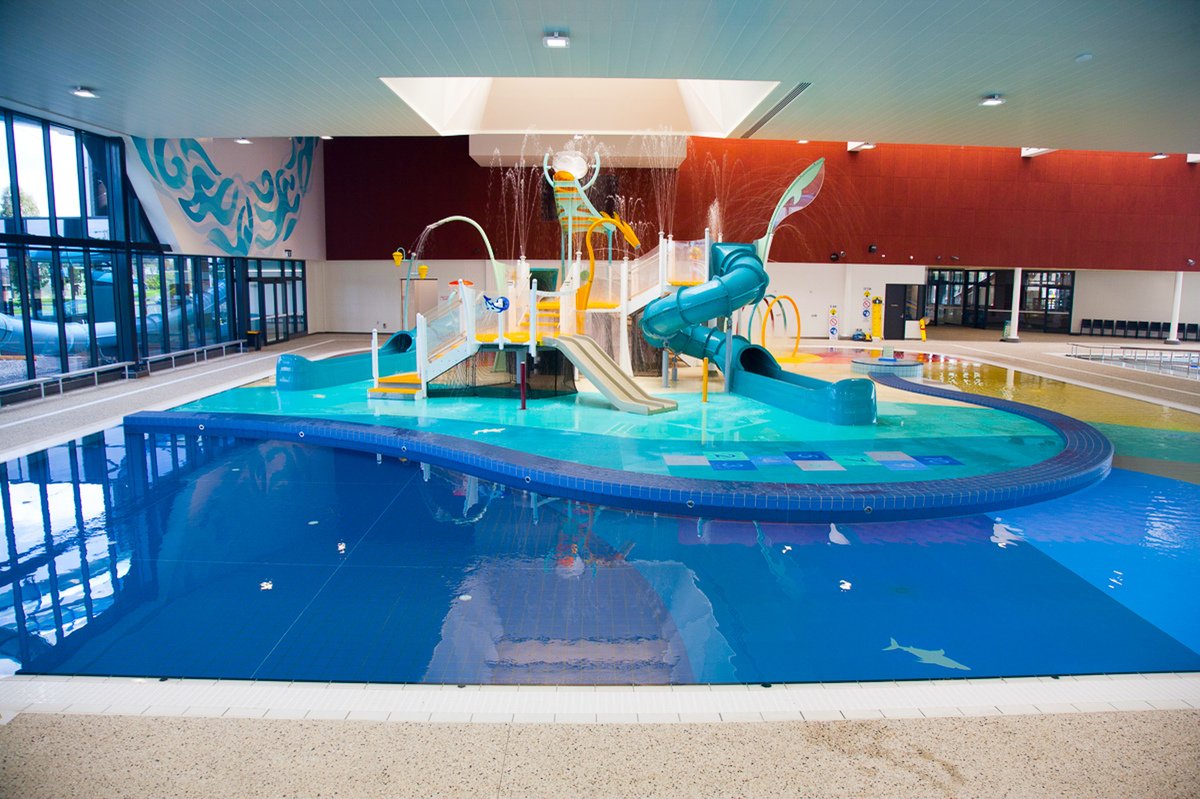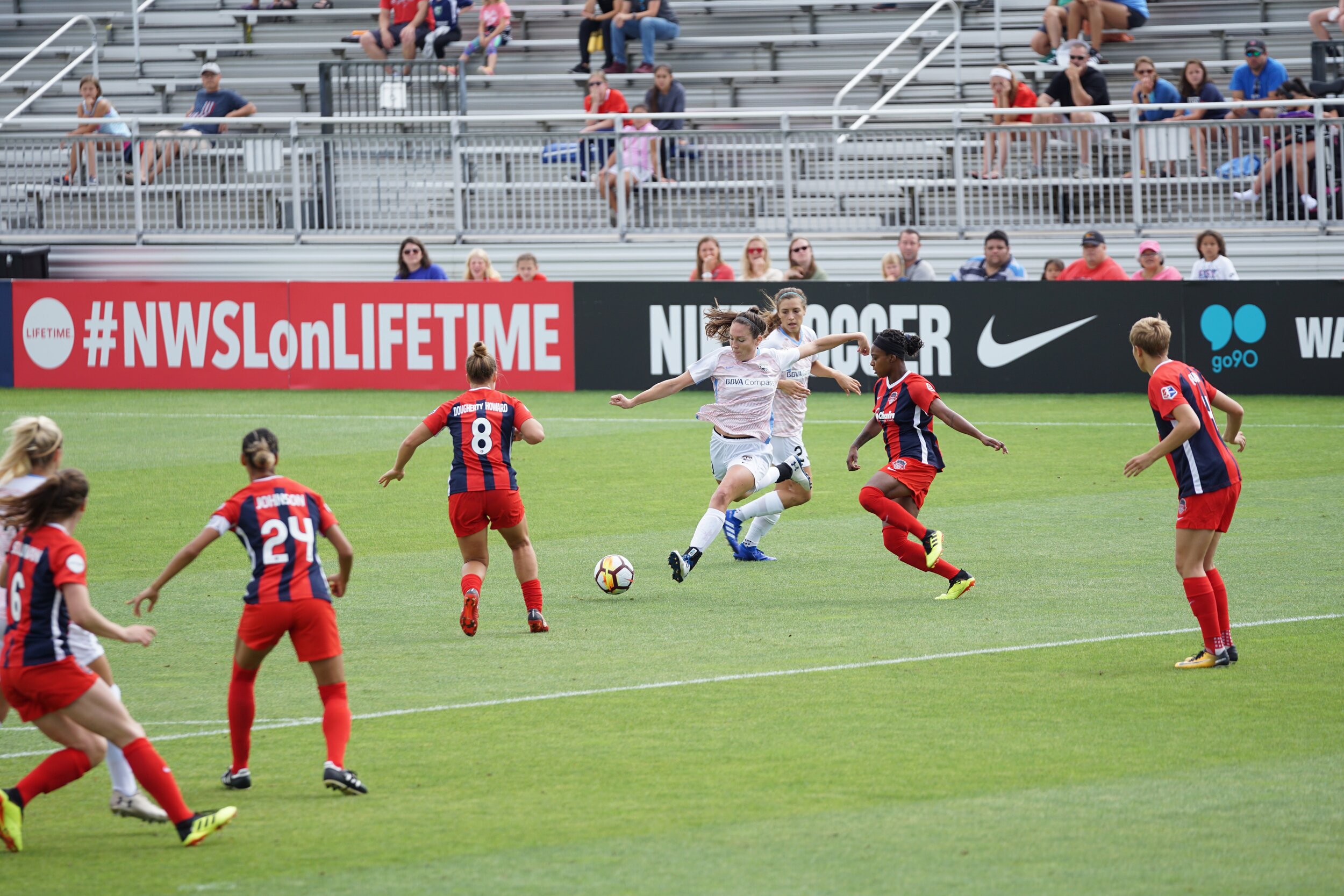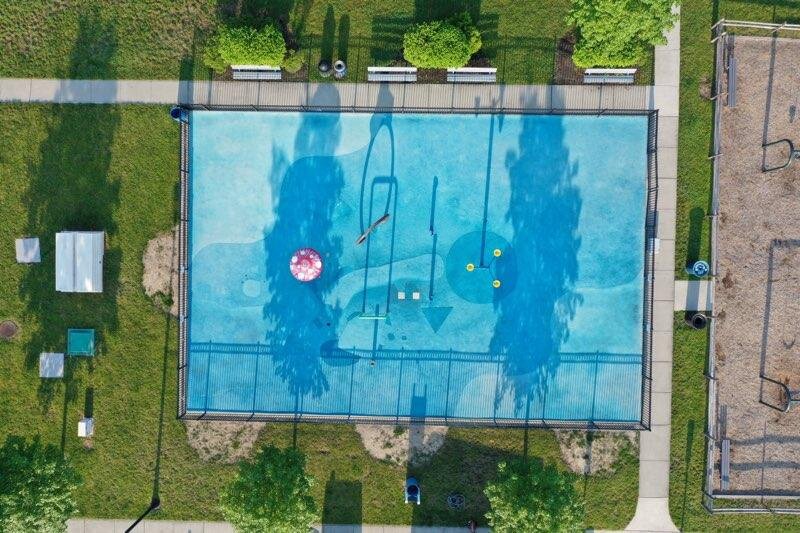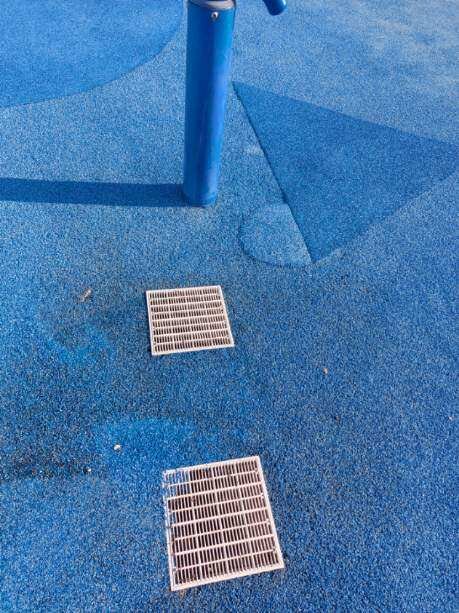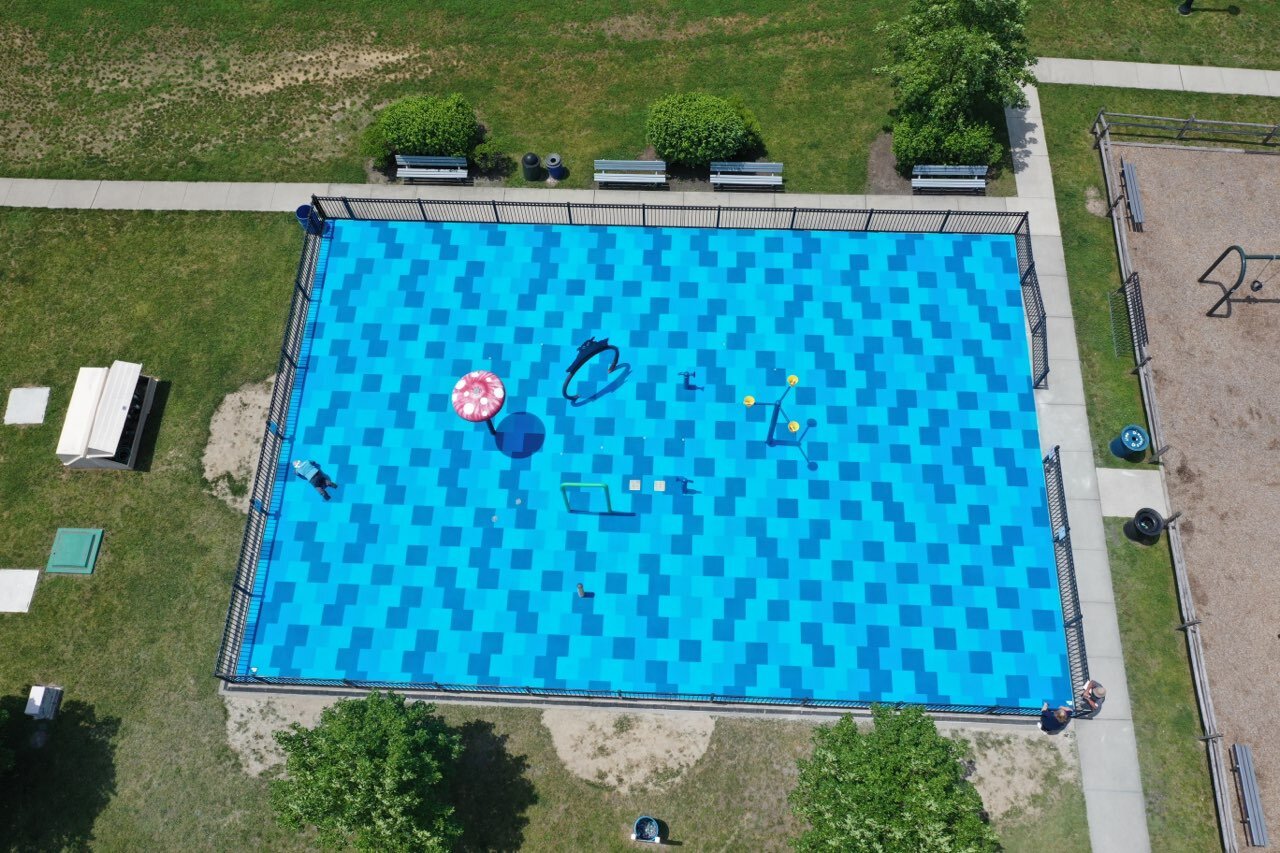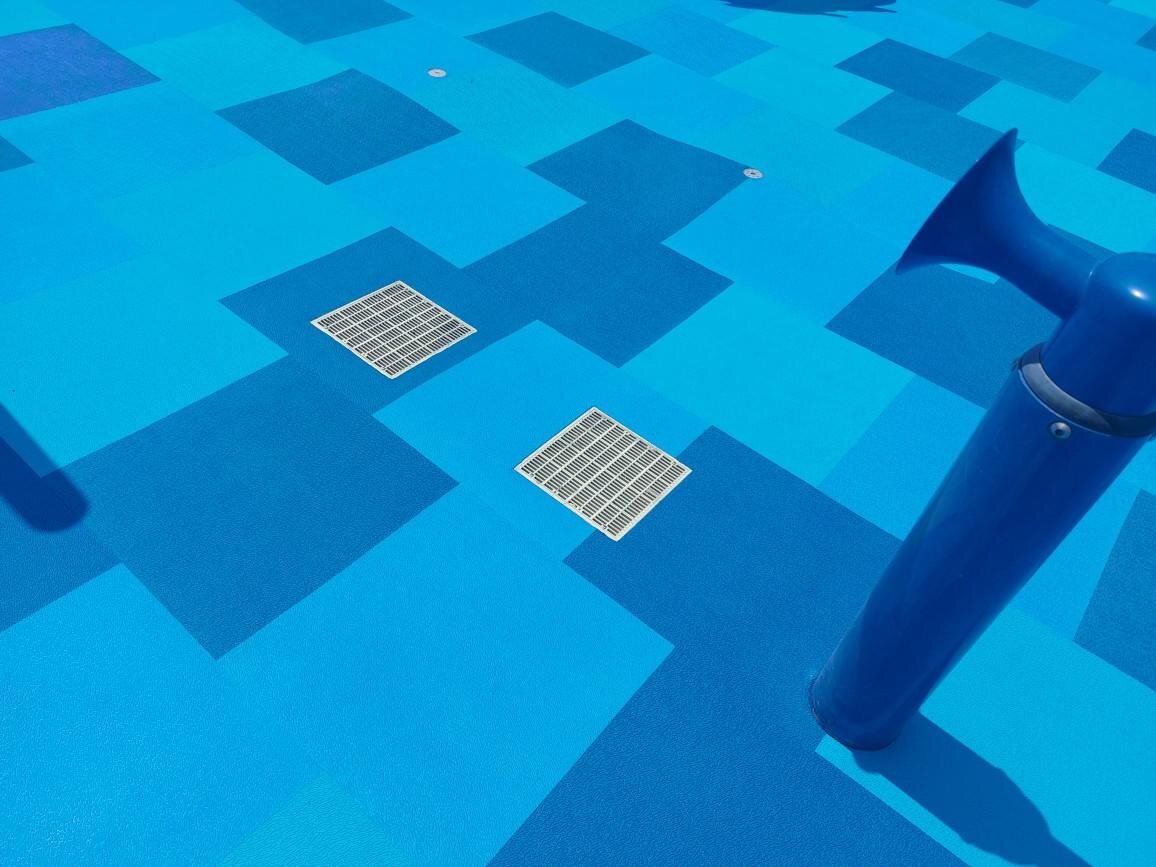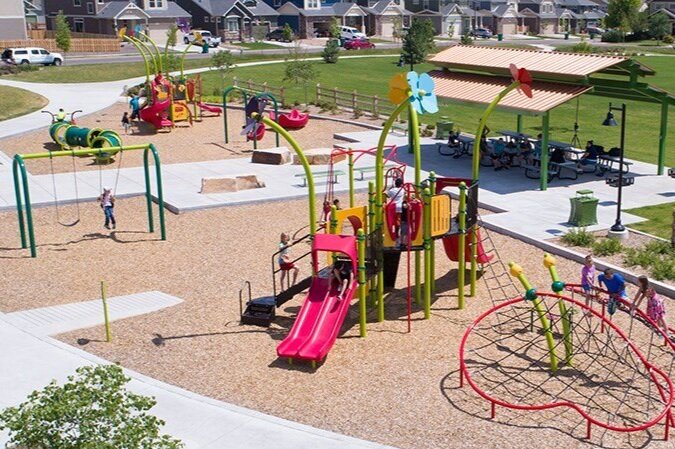Having the right surfacing on zero-depth entry applications is often overlooked when renovating existing facilities or building new ones. This commonly slippery area presents a hydroplaning challenge for operators, staff, and guests alike due to the sloping surface leading into the water. Adding cushioned and slip-resistant materials at these entry points can enhance safety, design, and accessibility at any aquatic center.
What is a Zero-Depth Entry?
Zero-depth entries provide a gradually sloped surface leading from a dry deck into a shallow depth of water that progressively gets deeper. Occasionally, spray features, jets, and toys will be installed where there is no depth of water present or in shallower areas, essentially functioning as small splash pads.
Customizable surfacing options, such as Life Floor, can integrate games, shapes, or activities into these areas before the depth of water increases to add additional engagement, create themed designs, and provide improved safety.
SURFACE Design of ZERO-DEPTH ENTRIES
Sometimes, it’s difficult for guests to visualize how deep water is becoming and how quickly. Gradients and colors that symbolize shorelines and water depth can be a good visual indicator of zones. For example, a walkway or lounge chair area can have tan colors that resemble sandy beaches while light blues can represent shallow water, gradually developing into darker colors as water depth increases.
In some states within the USA, pool codes require specific surfacing color options under certain depths of water. Internationally, restrictions are often less limiting, allowing for colorful designs that can extend deep underwater.
Wave Pools
Wave pools are a popular example of zero-depth entries and include the added challenge of active waves and currents.
Children often linger and play in the shallow depths of wave pools. This can be dangerous when inner tubes float towards the shore either empty or with guests in them since they can knock small children over and cause impacts with the surface. The youngest of guests may require extra balance to stand confidently in these dynamic areas. Older children and adults may also drift into shallow depths or recline on the surface while partially submerged.
Safety surfacing such as Life Floor that is slip-resistant and cushioned helps to increase comfort while adding safety to avoid incidents. Harder or more abrasive surfacing options can limit the types of play and interaction that happen within these areas.
Zero-Depth Entry Play Areas
Zero-depth entries for younger children have gained in popularity at indoor aquatic centers as alternatives to kiddie pools. These areas complement larger pool decks, hot tubs, slides, and other amenities for older guests that are offered.
These spaces are often a hybrid of small-scale elevated structures and spray toys tailored to small children. Toddler slides, collaborative activities, and safety surfaces all contribute to longer visits, increased play value, and overall comfort.
By increasing the surrounding comfort of these areas, caretakers and parents can have greater peace of mind and enjoy these experiences alongside their children and families for a full day of fun.
SMALL SPACES
Having an accessible, comfortable, and fun aquatic amenity regardless of size will contribute to positive guest memories and return visits. Small zero-depth entries can utilize safety surfacing in unique ways.
Some of our municipal clients choose to bundle surfacing for multiple small areas across their city to improve multiple small spaces such as zero-depth entries, splash pads, and landing pads for water slide exits.
Regardless of size, use, or design, adding safety surfacing to zero-depth entries helps to reduce slip and fall incidents while also improving aesthetics and overall guest experience. Keeping these zones in mind when designing aquatic facilities can completely transform the way visitors experience these accessible entry points.
To learn more about how you can improve the safety and design of your zero-depth entry, contact us and find out how you can receive a complementary design rendering tailored to your facility.
